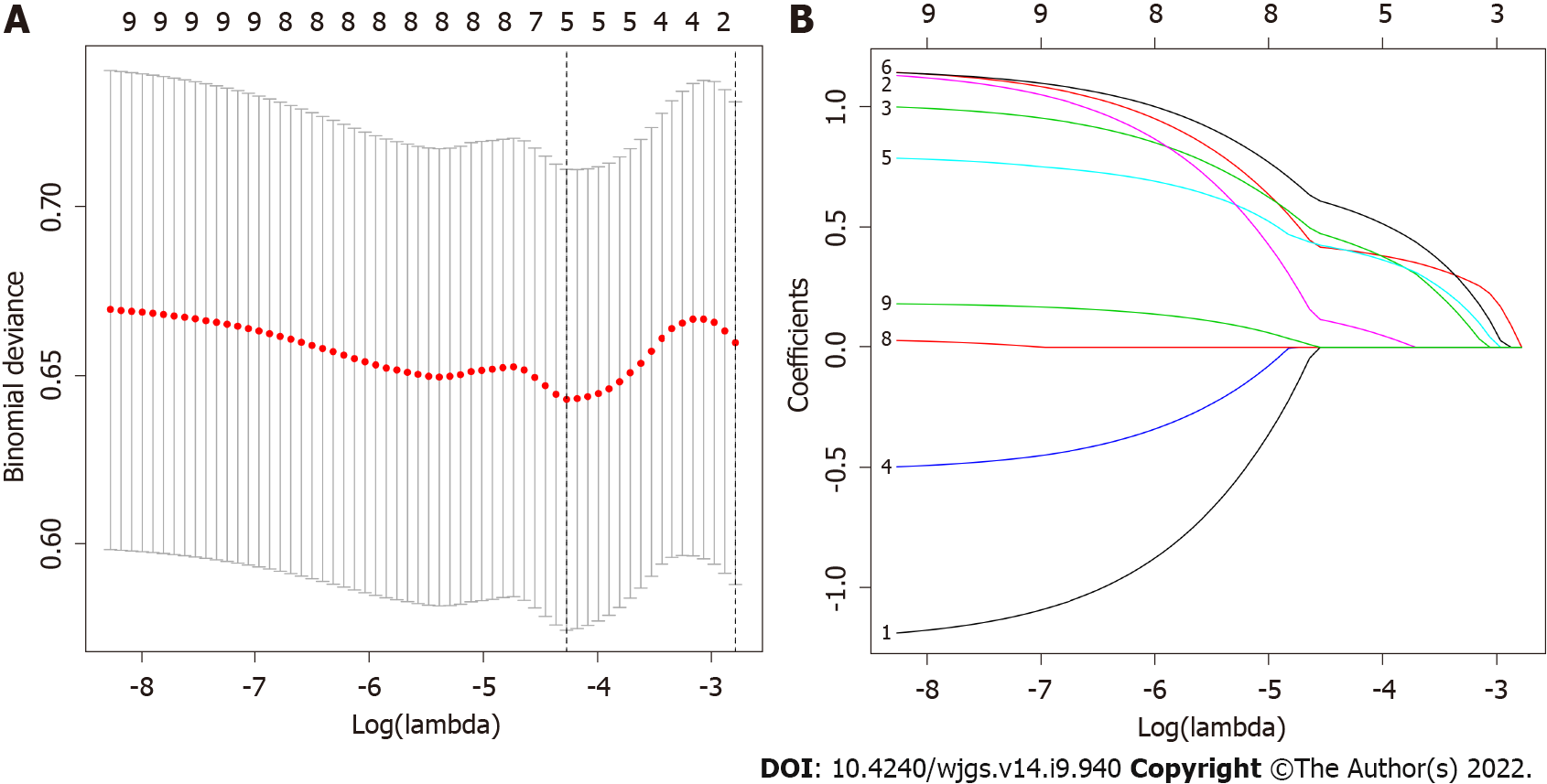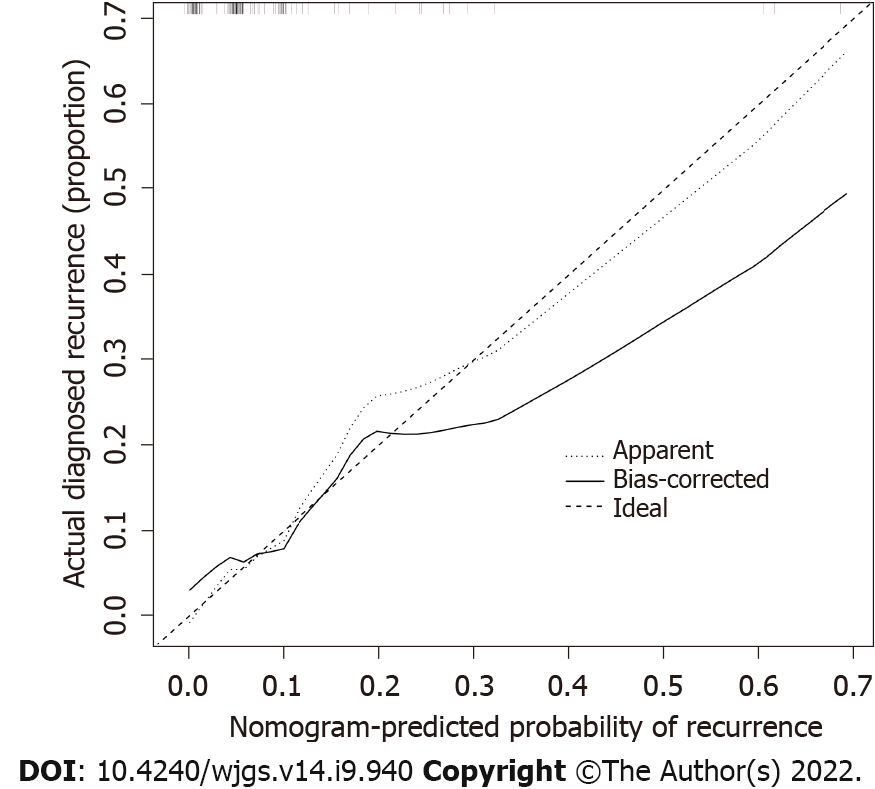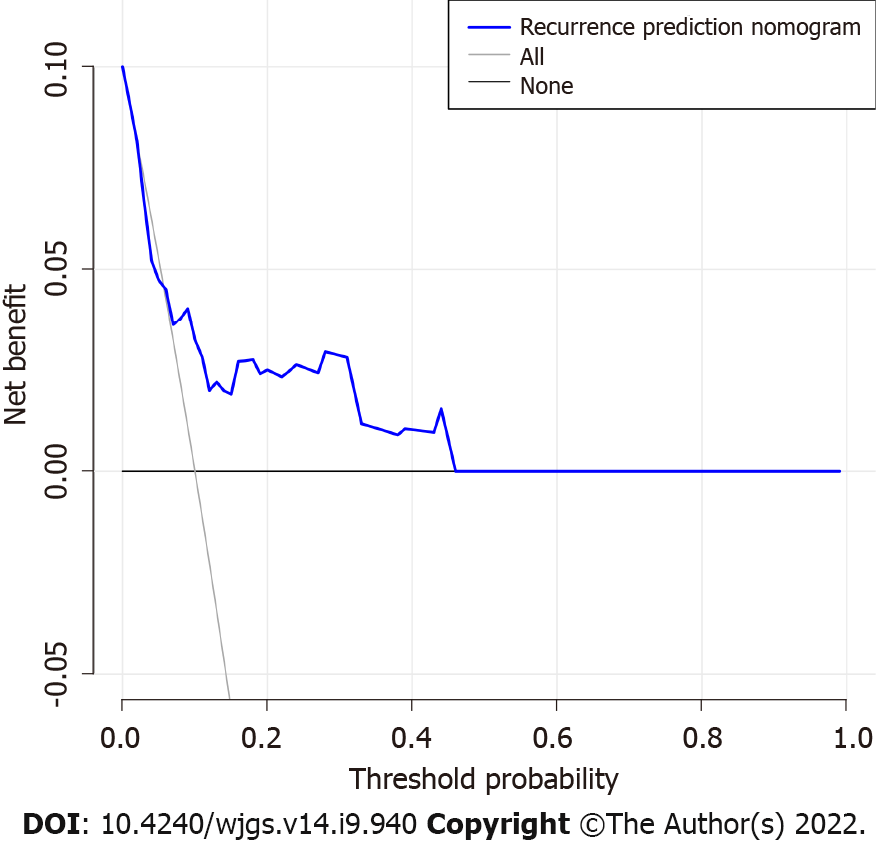Copyright
©The Author(s) 2022.
World J Gastrointest Surg. Sep 27, 2022; 14(9): 940-949
Published online Sep 27, 2022. doi: 10.4240/wjgs.v14.i9.940
Published online Sep 27, 2022. doi: 10.4240/wjgs.v14.i9.940
Figure 1 Clinicopathologic characteristics selection using the least absolute shrinkage and selection operator regression model.
A: Optimal parameter (lambda) selection in the least absolute shrinkage and selection operator (LASSO) regression model used five-fold cross-validation via minimum criteria. The partial likelihood deviance (binomial deviance) curve was plotted versus log(lambda). Dotted vertical lines were drawn at the optimal values using the minimum criteria and the 1 Standard Error of the minimum criteria; B: LASSO coefficient profiles of the 9 features. A coefficient profile plot was produced against the log(lambda) sequence. A vertical line was drawn at the value selected using five-fold cross-validation, where optimal lambda resulted in five features with nonzero coefficients.
Figure 2 Developed recurrence nomogram.
The recurrence nomogram includes mitotic rate, Ki-67, intratumoral necrosis, tumor size, tumor site and age. GIST: Gastrointestinal stromal tumors.
Figure 3 Calibration curves of the recurrence nomogram prediction.
The x-axis represents a possible risk of recurrence of gastrointestinal stromal tumor. The y-axis represents the actual recurrence. Diagonal dotted lines indicate predictions under ideal conditions. The solid line indicates the performance of the nomogram, and the closer it is to the diagonal dotted line, the more predictive the value is.
Figure 4 Decision curve analysis of the recurrence nomogram.
The y-axis represents the net benefit. The blue line represents the gastrointestinal stromal tumor (GIST) recurrence risk nomogram. The solid line indicates the hypothesis that all patients have recurrence. The thick solid line indicates the assumption that there is no patient recurrence. The decision curve shows that if the threshold probability is > 5% and < 100%, the recurrence nomogram in the current study can be used to predict the risk of recurrence of GIST and adds more benefit than the intervention-all-patients regimen or the intervention-none regimen.
- Citation: Guan SH, Wang Q, Ma XM, Qiao WJ, Li MZ, Lai MG, Wang C. Development of an innovative nomogram of risk factors to predict postoperative recurrence of gastrointestinal stromal tumors. World J Gastrointest Surg 2022; 14(9): 940-949
- URL: https://www.wjgnet.com/1948-9366/full/v14/i9/940.htm
- DOI: https://dx.doi.org/10.4240/wjgs.v14.i9.940












